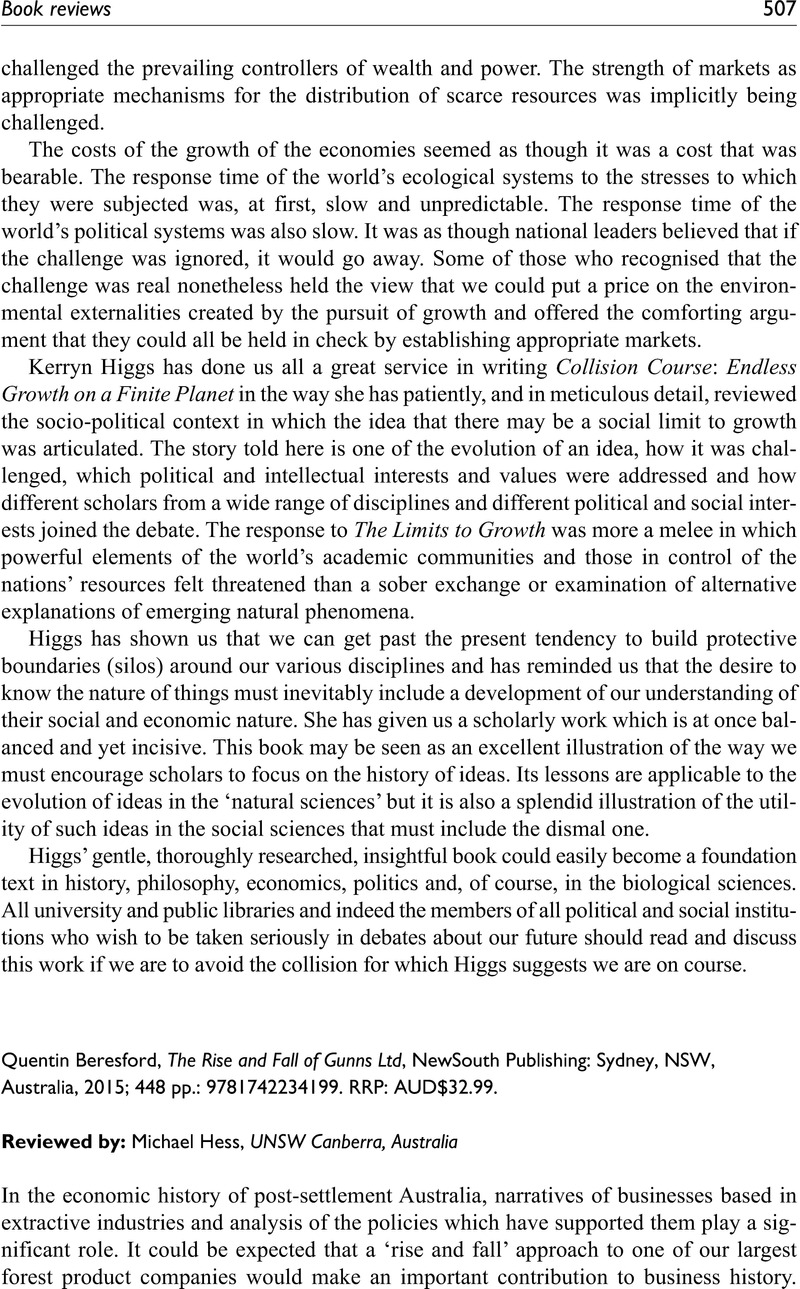No CrossRef data available.
Article contents
Quentin Beresford, The Rise and Fall of Gunns Ltd, NewSouth Publishing: Sydney, NSW, Australia, 2015; 448 pp.: 9781742234199. RRP: AUD$32.99.
Review products
Quentin Beresford, The Rise and Fall of Gunns Ltd, NewSouth Publishing: Sydney, NSW, Australia, 2015; 448 pp.: 9781742234199. RRP: AUD$32.99.
Published online by Cambridge University Press: 01 January 2023
Abstract
An abstract is not available for this content so a preview has been provided. Please use the Get access link above for information on how to access this content.

- Type
- Book reviews
- Information
- The Economic and Labour Relations Review , Volume 26 , Issue 3: Special Collection: Women’s Agency at Work , September 2015 , pp. 507 - 509
- Copyright
- Copyright © The Author(s) 2015


